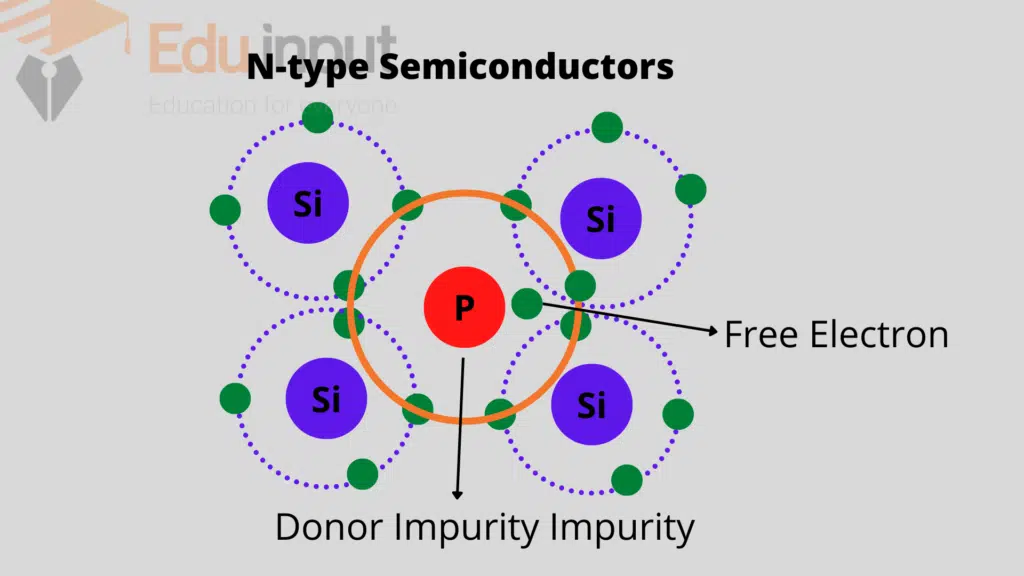Semi-Conductors-Definition, Types, Properties, And Application
Semi-conductors such as metallic copper, and an instrument, such as glass, has an electrical conductivity value that falls between conductor and insulator. The metal behaves in the opposite way when its temperature increases.
In useful ways, its conducting properties may be altered by introducing impurities into the crystal structure. A Semiconductor junction is created when two different doped regions exist in the same crystal.
What are Semi-Conductors?
Semi-conductors are tiny devices that store electricity, but they don’t produce any current. These are the tiny transistors, resistors, capacitors, and diodes. They are the most important components of electronic devices.
Transistors are the most important components of a computer and an integrated circuit. Diodes help in the flow of electricity and its transformation.
Capacitors are the essential part of a radio, amplifier, and telephone. Resistors are used for controlling the current.
Semi-conductors play a crucial role in almost all electronic devices and are made of metal oxide. They are used for a wide range of applications, such as memory chips, circuit boards, and a microchip.
Semi-conductors are the basic components of a transistor. In a transistor, a silicon substrate, or semiconductor, acts as a switch that allows the electrons to flow through the circuit.
The main purpose of a transistor is to amplify small voltages in a circuit. It is the key component of an integrated circuit.
Semi-conductors are the most important components of a transistor. A transistor is a two-terminal device that conducts electricity but does not produce any current. It consists of a channel, a gate, and a source and drain.
A transistor is a three-terminal device that produces a current, but it is not a semiconductor. It is made up of a single crystal of silicon, and the structure of the transistor is called a MOSFET (Metal Oxide Semiconductor Field Effect Transistor).
When a current is produced in a transistor, it creates a voltage drop that can be amplified by other transistors. Semi-conductors are used for a wide range of applications. A memory chip, a circuit board, and a microchip are some of the most common applications of semiconductors.
Most ceramics have a conductivity between conductors and non-conductors that is similar to that of Semiconductors. Semiconductors can be pure elements, such as Silicon or germanium, or compounds such as gallium or selenide.
Types of Semi-conductors
There are two types of Semi-conductors
- Intrinsic Semiconductors
- Extrinsic Semiconductors
Intrinsic Semiconductors
Intrinsic semiconductors are the pure semiconductor. Germanium (Ge) and Silicon (Si) are the most common type of intrinsic semiconductor elements.
Extrinsic Semiconductors
A small number of replacement atoms called Impurities can be introduced to improve the Conductivity of Semiconductors. DOPING is the process of adding the impurity atoms to the pure Semiconductor. There are further two types n-type and p-type.
The main difference between intrinsic and extrinsic semiconductor is that a pure semiconductor is intrinsic and an impure semiconductor is known as an extrinsic semiconductor.
Holes and Electrons in Semiconductors
The positively charged electric charge carrier and the negatively charged particles are called holes and electrons. Both holes and electrons are the same sizes but have different polarities.
Mobility of Electrons and Holes
The mobility of electrons is higher than that of the holes in a semiconductor. Their different band structures and scattering mechanisms are the main reason for it. The holes travel in the valence band while the electrons travel in the conduction band. When an electric field is applied, holes can’t move as freely as electrons because of their restricted movement.

The creation of holes in the semiconductors is caused by the elevation of electrons from their inner shells to higher shells. The holes have lower mobility because they experience stronger atomic force by the nucleus than electrons.
The mobility of a particle in a Semiconductor is more if; the Effective mass of particles is less than the time between scattering events. when one of the free electrons leaves the lattice position, it creates a hole. Positive charge carriers are moving in the lattice and can be imagined as a hole created by taking the opposite charge of the electron.
Properties of Semiconductor
Semiconductors are capable of conducting electricity under preferable conditions. It is an excellent material to conduct electricity in a controlled manner because of its unique property. Unlike conductors, the charge carriers in semiconductors arise from outside energy. It causes a certain number of electrons to cross the energy gap and jump into the conduction band, leaving an equal amount of unoccupied energy states. There are holes in the building. It’s equally important that the conduction is due to electrons and holes.
- Resistivity: 10-5 to 106 Ωm
- Conductivity: 105 to 10-6 mho/m
- Temperature coefficient of resistance: Negative
- Current Flow: Due to electrons and holes
Applications of Semiconductors
They are ideal to be used in a wide range of components and devices because of their reliability, compactness, low cost, and controlled conduction of electricity. Microcontrollers, integrated chips, and much more are made up of semiconductors.
Semiconductors are capable of designing technological wonders like microchips, transistors, LEDs, solar cells, and so on because of their physical and chemical properties.







Leave a Reply